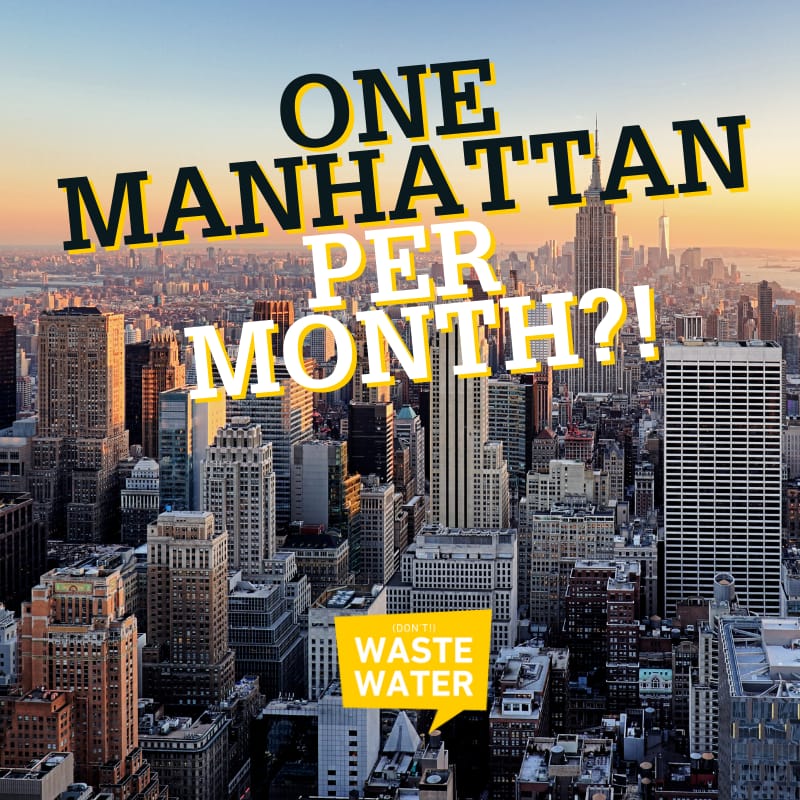Urbanization progresses at a galloping pace. What’s that to do with the Water Industry? It’s simple: more people living in cities means that the water infrastructure may soon become undersized.
So what shall we do? Let’s review ⬇️
This is part of my exploration of Water Networks
Table of contents
Urbanization will Impact Water Networks
Urbanization and Water Networks have a long common history.
Actually, it is a double-sided relationship!
Desertification is a challenge for citizens and young people because they are forced to leave. When they leave rural areas, it puts pressure on the cities. It is like a vicious cycle! There are communities without good quality water, or without that access to sanitation that are not developing. So young people are leaving and because of that, the territories are not developing.
Hasmik Barseghyan
Water Scarcity is a main driver of urbanization, and in turn, urbanization is a main driver of water stress, as the urban infrastructure struggles to keep up with this galloping growth.
The pace of urbanization becomes a challenge
Aaron Tartakovsky and Ramzi Bouzerda share some straightforward metaphors, to get a feeling of what we’re discussing.
The rate at which we are adding new building stock to our global supplies is like we’re adding a new Manhattan every single month from now until 2060. So we’re just building! And in many cases we’re going up and we see that a lot of these cities are built on infrastructure that is not designed to handle that type of urban density.
Our water networks were designed to accommodate a certain amount of wastewater flow and designed to provide a certain amount of water.
Aaron Tartakovsky – CEO & Co-Founder of EPIC CLEANTEC
The second one is that by 2050, 70% of the world population will live in cities actually. And what is completely mind blowing is that we are building New York city every single month to reach that figure. So basically the number of water assets. On the globe is maybe the biggest internet of things offer other today.
Ramzi Bouzerda – CEO & Founder of DROOPLE
Of course, when you’re building that much and everywhere, it has consequences.
Increased density impacts water and wastewater networks
As Aaron Tartakovsky, summarizes:
Every city is going to have different challenges when it comes to their water and wastewater infrastructure, which goes back to no there’s no one size fits all solution.
Aaron Tartakovsky – CEO & Co-Founder of EPIC CLEANTEC
We can react to this need for tailored solutions in many different ways. It may be an opportunity and a chance to deploy reuse and distributed treatments.
But it’s also a wake-up call to leave a place for nature in cities, as Hasmik Barseghyan confirms:
We need to find the best way as to how to live with nature. We need to learn that and to make our cities hopefully more smart, but also more integrated to the environment.
Hasmik Barseghyan
An increasingly natural infrastructure
That trend has started, and it may well take urban water management by storm, according to Marc Barra:
Some hydraulic engineers are turning back actually to a century of hygienic ideology, where nature was sent outside the city, where urban rivers were channeled and buried and sanitized.
Marc Barra
As a result, as cities will crystalize attention from all the places in the world, they will be at the forefront of the sustainability transition.
What will be the next frontier?
Which already gives us a hint at where to look next, according to Navkaran Singh Bagga:
Large tax-paying population lives in cities. The pressure on cities to kind of ramp up open development is at its highest. And for that reason, the rural areas get neglected because it’s a trickle down effect. So the idea for me and the world I see is as more and more urban areas become sustainable, then the real focus of governments will be the kind of provide infrastructure to the live.
Navkaran Singh Bagga – CEO & Founder of AQVO
To conclude, there’s one key here.
The only thing that will never change is change. So, if there’s one single take-home message you shall embark with you on your 2022 journey it’s that simple: stay open-minded.

